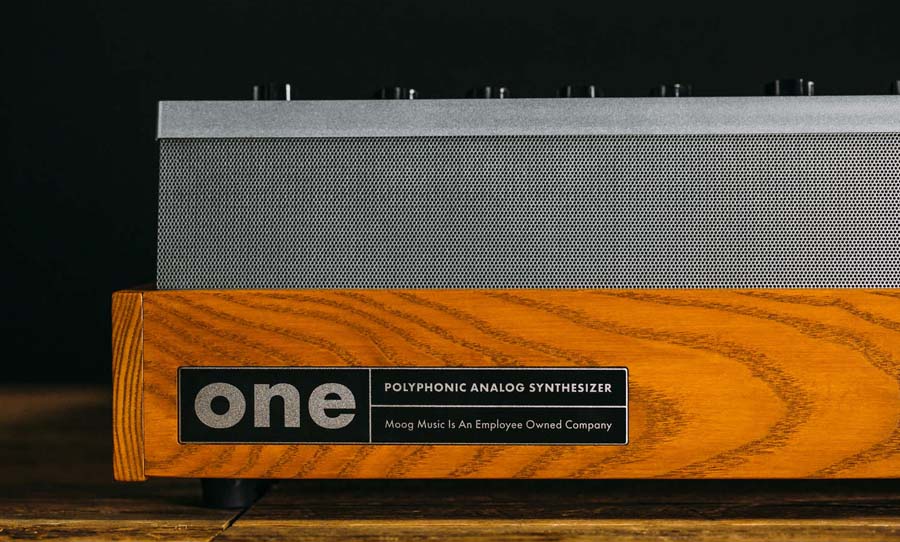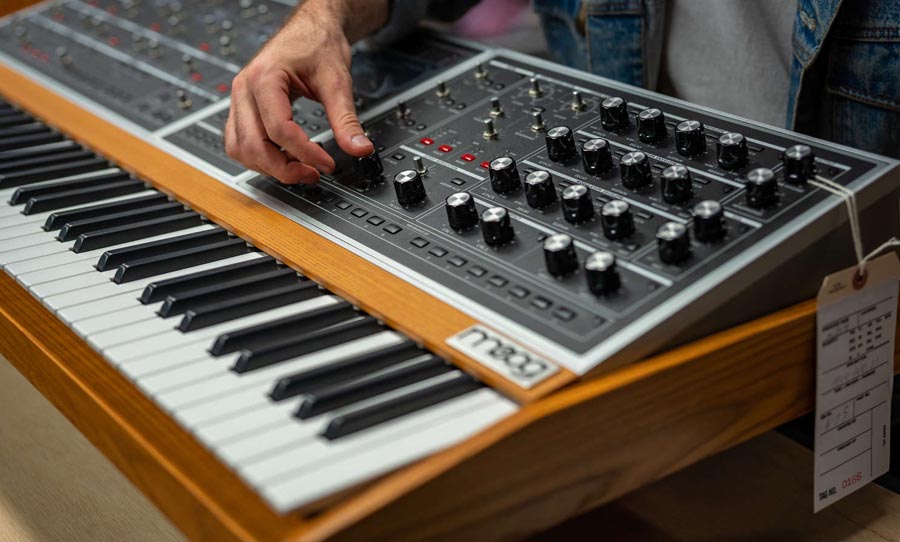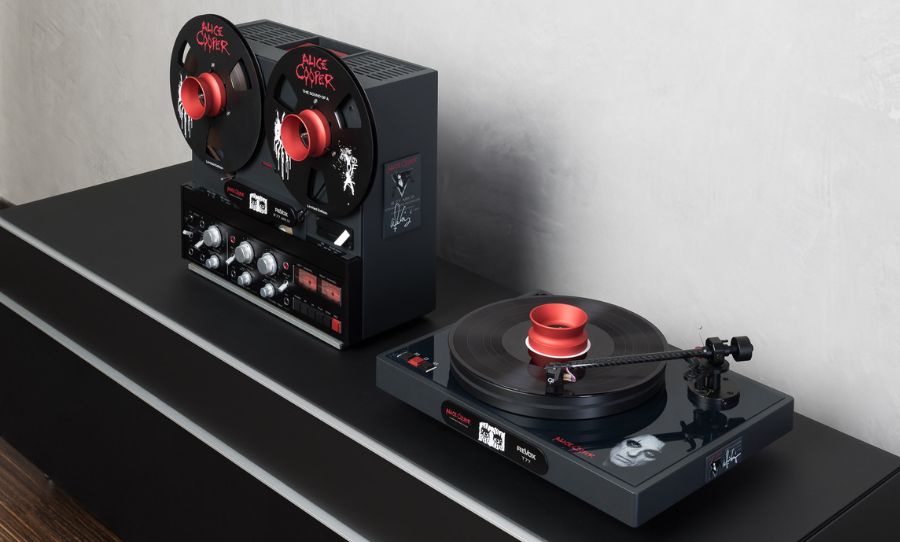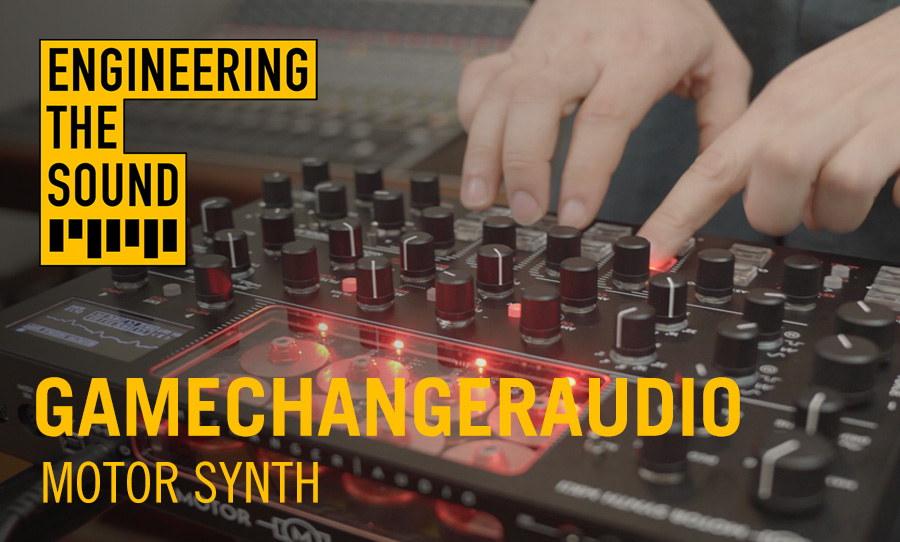The Moog One has floored the world upon its arrival. A tri-timbral, polyphonic beast that oozes power and class. Why don’t we make synths like this anymore?
If you’re completely new to the realm of musical instruments or have been hiding under a rather large rock except for the last decade, you might think that synthesizers have always been relatively cheap, small, and punctuated with twee plastic buttons. Anyone who doesn’t fit into the above categories might be able to tell a different story.
Once upon a time, the synthesizer was the domain of the technically ambitious, had users who weren’t afraid of losing month’s sleep trying to figure it out or, were just obscenely rich. Icons like Suzanne Cianni, Delia Derbyshire and Mort Garson dedicated their entire lives to understanding the complexities of transforming electricity into sound, and when you put it like that, it’s little wonder that the synth has shrunken in size and price.
These market pressures and popular demand make an instrument like the Moog One all the more baffling. What business does this new synth – which you might have to sell a kidney to obtain – have in the economically straitened epoch in which we find ourselves? Let’s take a closer look at this lavish instrument and ponder the question: why don’t we make synths like this anymore?

No Corners Cut
It’s safe to say that Moog has cemented a reputation in synth craft based on a “no-compromises” philosophy. From their beginnings in modular synthesis to the Minimoog, the Taurus, the Memorymoog and beyond – this is a company that has prided itself in providing the best that money can buy.
That’s not to say they haven’t put out more affordable products – the Minitaur, and Moogerfooger series of effects repositioned the company in a different, more accessible category. Releasing affordable products has been the obvious MO for the other giants of this industry – Reface, for example, is a reboot series of some of Yamaha’s classics, the same goes for the Boutiques from Roland.
Whereas Roland and Yamaha have cleverly traded on the reputation of the legacy products, providing a new generation access to the sounds of their premium instruments, Moog has gone in a completely different and wholly original direction with the One.
Livin’ the Dream
Aside from the One, Moog has also introduced the Grandmother and Matriarch in recent times, both of which employ a semi-modular architecture, a style which has recently been in vogue. This indicates that Moog has also been keen not to neglect the medium-priced synth market, which is much more commercially competitive.
Yet they’ve largely ignored the prevailing industry trend to micro-size synths. Instead, they’ve pulled out all the stops in creating their new flagship synth. So what makes it so special?
Here’s what the company have to say about the instrument:
“Moog One is the ultimate Moog synthesizer – a tri-timbral, polyphonic, analog dream-synth designed to inspire imagination, stimulate creativity, and unlock portals to vast new realms of sonic potential.”
If that piece of purple prose is anything to go by, they haven’t been afraid to put all their eggs in one basket. It’s available in 8 and 16 voice configurations, with 3 analog VCOs per voice. The sounds that can be produced, redefine thick textures.

Adding to the depth of tone that the One can produce, the synth is tri-timbral, meaning that three different sounds can be layered on top of one another, or be split across the 61-key keyboard. Furthermore, each of the three timbres enjoys their own sequencer, arpeggiator and effects library. And speaking of effects, premium ambient, modulation, bit crushing, vocoding comes courtesy of Eventide.
2 independent analog filters are available, a dual-source noise generator, 4 LFOs and an analog mixer that provides routing options for each oscillator, noise generator, ring modulator and even allows you bring in external audio.
A premium instrument, with a dizzying list of specs and a vast array of options for crafting unique sonic tones. What’s not to like?

Bucking the Minimal Trend
One of the key benefits of the downsizing phenomenon is simplification. Think about your parents’ generation for a minute – when they’ve finally ejected their chronically underemployed, smashed-avo-on-toast loving children from the family abode, do you think they’re looking to extend on their house? Not likely.
When synths are downsized, they’re also simplified by necessity. But the Moog One has 73 knobs and 144 buttons on its front panel. It’s probably safe to say that someone looking to dip their toes in the ocean of synthesizer possibilities might find that prospect a little confronting.
Even the musician who is regularly engaging with a synth might find that they’d benefit from a carefully curated, guided experience rather than having an indigestible amount of options presented to them. Limitations can be your best friend when you’re trying to bring a musical idea to fruition.
But these theories fall into the realm of speculation. Some people want a guided experience, but others want carte blanche to go nuts. And this is what the Moog One caters to. The ultimate tool at a vertiginous price, but containing multitudes of options for sonic construction. Watch below as contemporary synth icon Daniel Lopatin speaks about his creative process in developing the soundtrack for the Safdie Bros’ Uncut Gems on the Moog One. Producing score for film is one of the more justifiable reasons that this instrument could be acquired, but even then Lopatin even speaks of using Moog patches rather than designing them himself- the Moog One potentially being even too deep for one of the world’s greatest synth aficionados.
But even though the price sets the Moog One in a synth class that has been forgotten in recent memory, there’s no doubting the beauty of this instrument. The demand for hardware like this may have shrunk, but for the people who are truly committed to exploring the outer possibilities of synthesis- you have the one tool to produce these sounds. And only in those people’s hands are we able to see what this singular statement of an instrument is truly capable of.



